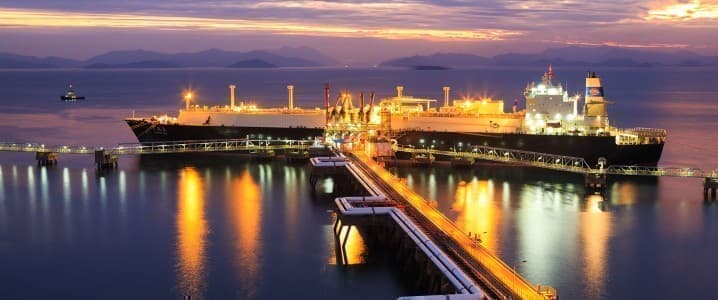The last LNG carrier that passed the Bab el Mandeb strait off the Yemeni coast did so in February. Since that month, there has been no LNG traffic via the once major energy chokepoint as vessels diverted around Africa—or changed destinations entirely.
When the Houthi attacks on ships traversing the Red Sea prompted the redirection of maritime trade in the area, multiple analysts tried to gauge the significance of the events. Most seemed to agree that the rerouting of maritime transport would make goods more expensive and deliveries slower. LNG was no exception, with analytical outlets pointing towards the tightening of LNG carrier supply because of the longer journeys and the potential for market fragmentation.
To date, this fragmentation is a fact. Qatari liquefied natural gas is now mostly going to Asia—and Russian LNG is going to Europe. U.S. LNG is going to both places, but now some forecasters are warning that a supply outage anywhere would affect the market more severely than it would have before February.
The Oxford Institute for Energy Studies said in a February analysis of the situation that Red Sea ship diversion would make Europe more reliant on U.S. LNG as Qatari LNG becomes more difficult to ship there, while that same Qatari LNG would go more to Asia. This is exactly what has happened. Qatari is selling more liquefied gas to Asian buyers while Europe is buying more U.S. gas—Russian, too.
Bloomberg this week reported shipping data showing that Qatari LNG exports to Asian countries had risen to the highest since 2017 this year while Russia increased its LNG shipment to Europe, despite EU threats of sanctions and bans on these imports. Yet the report also sounded a note of caution—if a production outage occurred in any of the major producing countries, compensating for it by another producer would be tougher than it was before February.
What this means is that the global LNG has become more fragile than before, with price spikes more likely in case of any change in the balance between supply and demand. The recent outage at the Freeport LNG plant, which led to higher prices for U.S. LNG was a good example of this. Now, it’s the Gorgon LNG project in Australia that has been suspended due to a mechanical fault and prices are once again up, because that outage has coincided with seasonally rising demand in Asia.
According to Bloomberg, the solution in such situations involves cargo swapping, with U.S. producers sending their own LNG to Europe and buying other, likely Middle Eastern, cargos for their clients in Asia, for instance, to fulfill their contractual obligations. This appears to be the new normal for LNG exports since it does not look like the Houthis are about to stop shooting at ships in the Red Sea.
For now, the situation appears to be relatively easily manageable. While the supply of LNG carriers may be a bit tighter than before because of some of these tankers’ longer journeys, the fragmentation of the market suggests most are deployed on regional journeys that are shorter. But demand for gas is expected to rise further as summer begins in the northern hemisphere and demand for air conditioning increases. This might require a lot more cargo swapping, the Bloomberg report has suggested. And this, in turn, may lead to higher prices.
China, the world’s largest LNG buyer, may see another record year for imports, according to PetroChina. The state energy major has predicted an annual increase in imports of between 9% and 12%. In the first quarter alone, China imported 20 million tons of the superchilled fuel.
Meanwhile, EU sanctions targeting Russia’s LNG industry could disrupt supply by making it harder for Novatek to send cargoes to Asia. This, according to analysts cited by Bloomberg, would mean more Russian LNG staying in Europe in a rather ironic twist, and less going to India and China—unless Novatek does more cargo swaps.
Yet EU sanctions on Russian LNG would also affect international LNG traders such as Shell, TotalEnergies and Germany’s new state entity Securing Energy for Europe GmbH, which would need to find alternative supply for their non-European clients if Russian cargos become too problematic to buy. And the Red Sea will remain closed for LNG shipping for the observable future.
It appears, then, that the LNG market will remain in its current fragmented—or perhaps segmented—state at least for a few more months or even more should the Israel-Hamas war extend beyond 2024. The industry will adapt, as it has so far. Yet supply security may become a bit more challenging for key import markets. In this situation, all it would take to disrupt the market would be a production outage of the sort that appears to be quite frequent in large LNG projects.
ADVERTISEMENT
By Irina Slav for Oilprice.com
More Top Reads From Oilprice.com:
- Oil Prices Climb on a U.S. Inventory Draw and Inflation Optimism
- Memorial Day Travel Expected to Near Record High
- The IEA Has Cut Its Oil Demand Growth Forecast for 2024


















